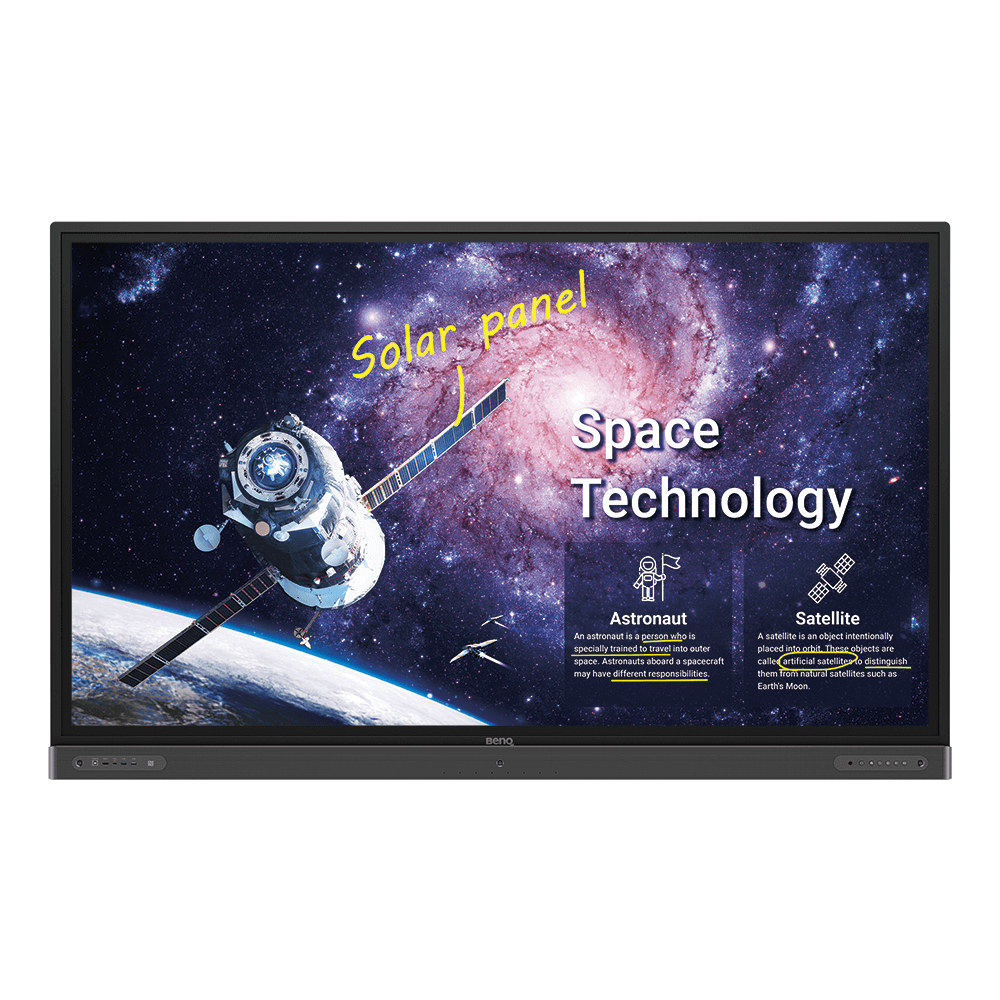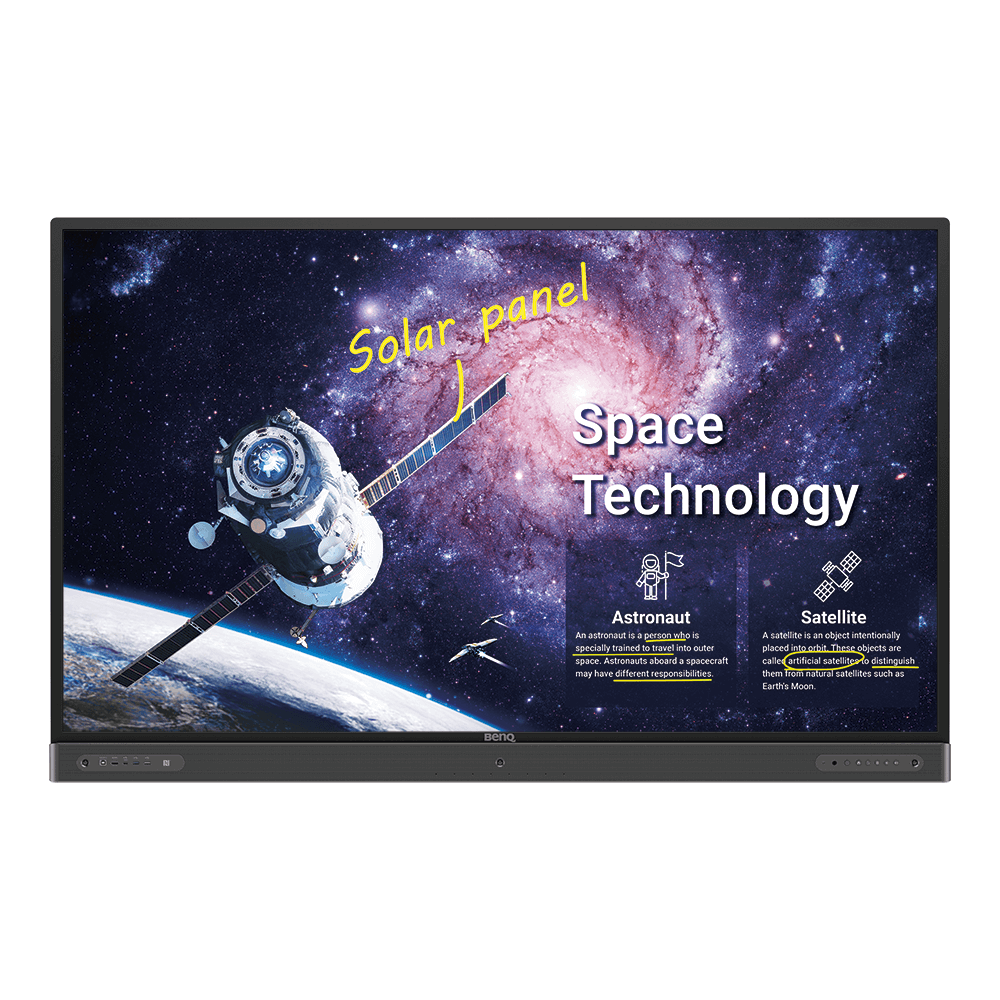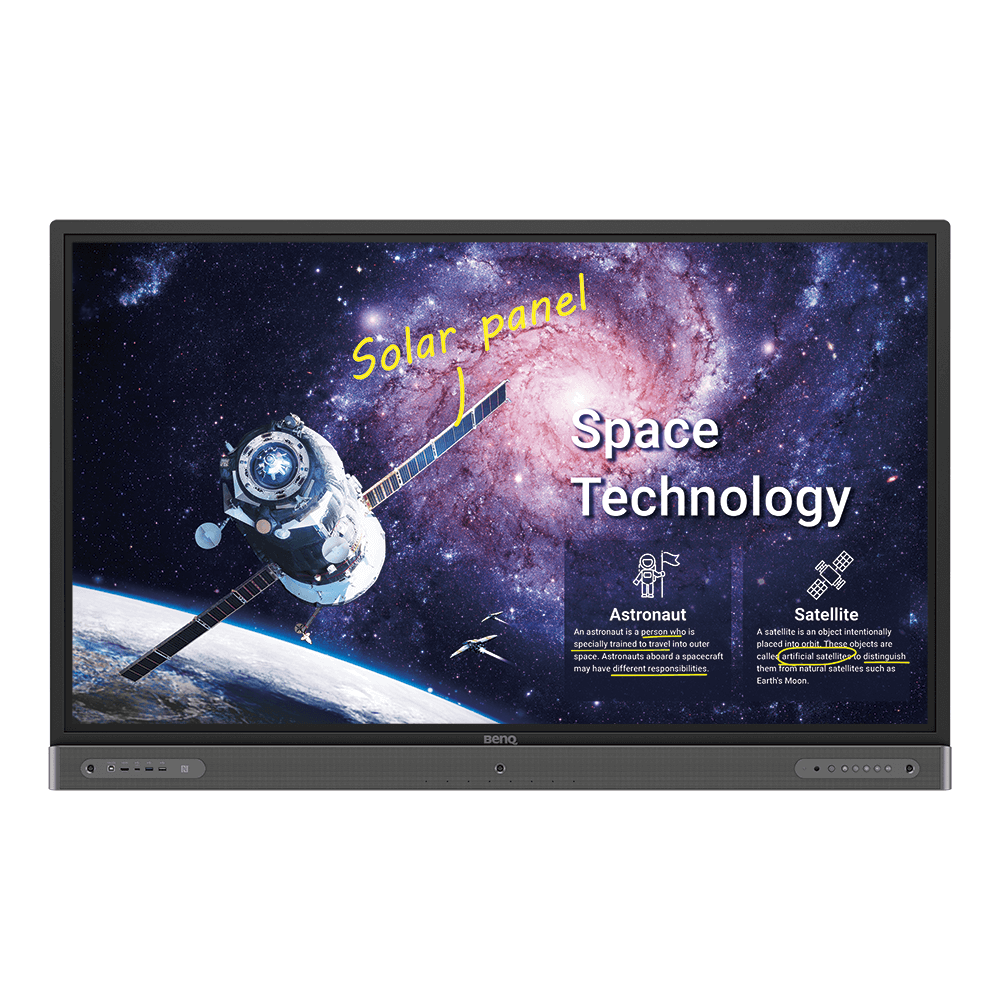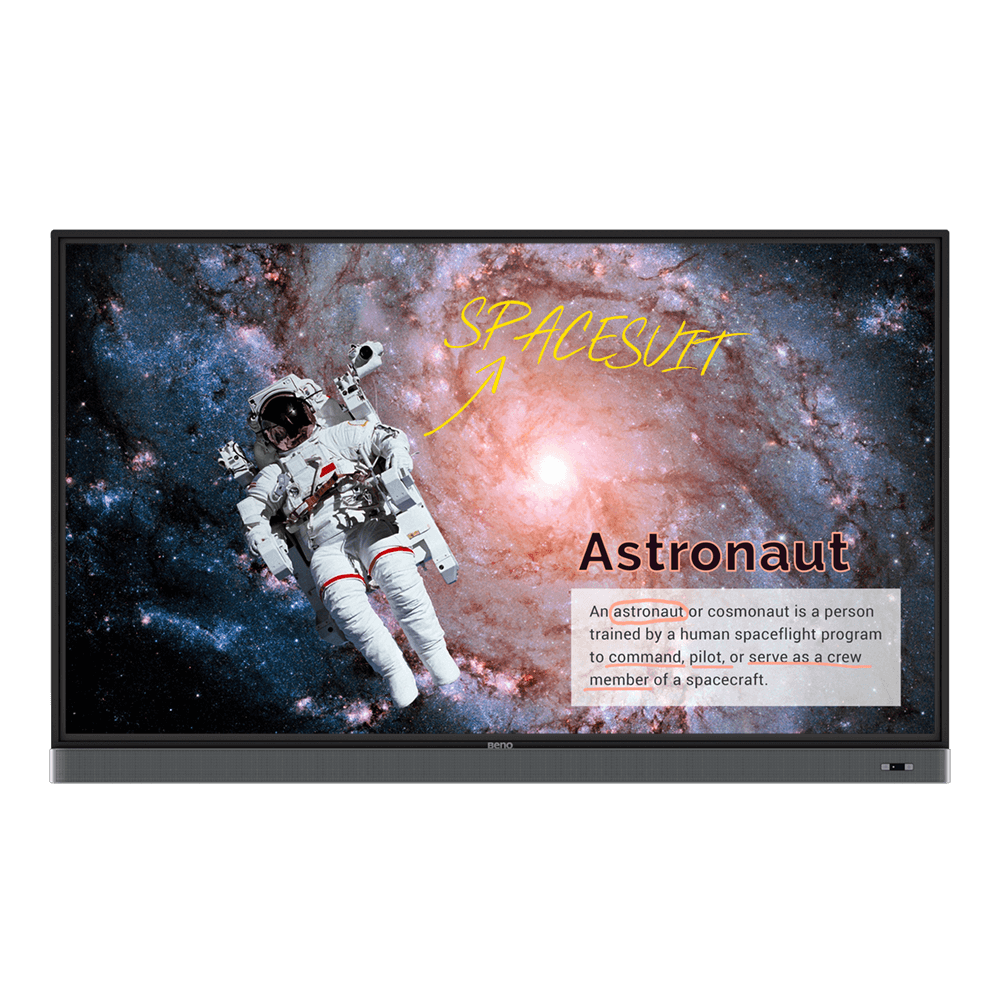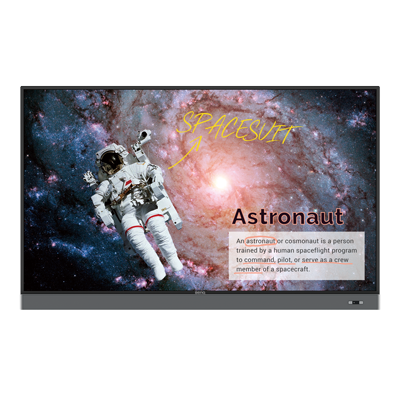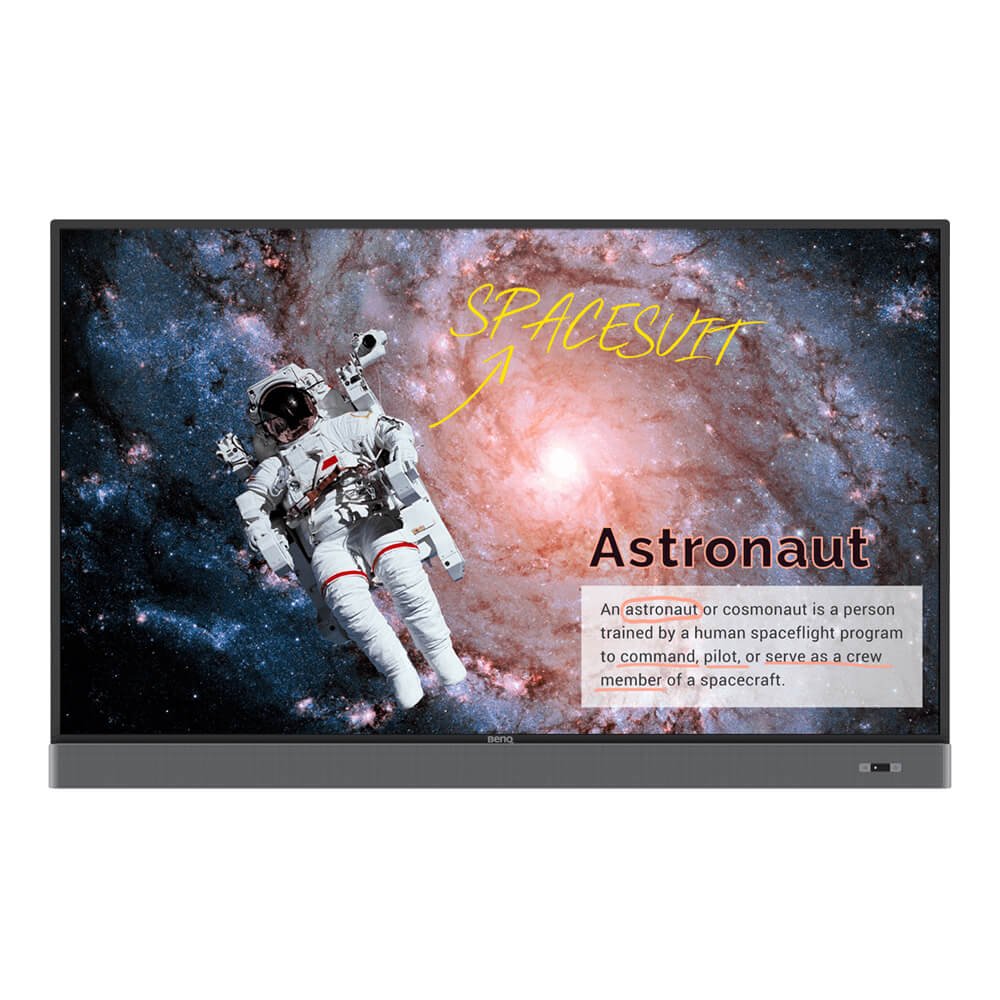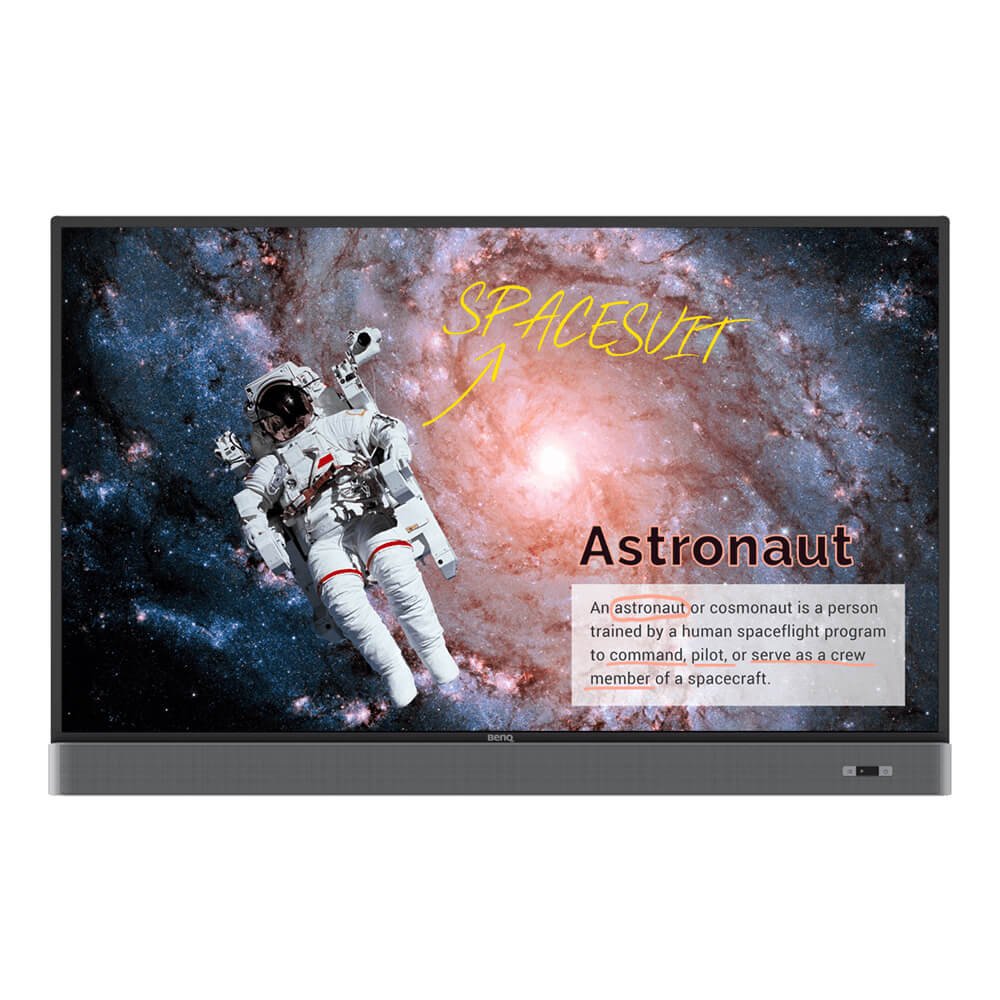Kahoot! is a great tool to create fun classes and improve students engagement. Learn how to get started with Kahoot! on your BenQ Interactive Display.
8 Ideas for Fun History Class Activities with BenQ Boards
- Teacher Tips 'N Tricks
- Interactive Displays for Education
- 2022-01-19
Raising aware and responsible individuals is as much the task of parents as it is of civics teachers like yourself. And we know that to prepare for the future, we need to look into the past.
History can teach us valuable lessons, but to do so you need to make sure you teach in the most effective manner possible. In 2022 you have more tools at hand than ever before. With the help of modern technology, you can bring a whole new level of interactivity and engagement into your civics and history classrooms.
One such tool are interactive displays from BenQ. Check these tips on how to best use your BenQ board to teach an unforgettable history class.
Here are 8 fun, engaging history class activities examples that your students will love for the BenQ interactive board.
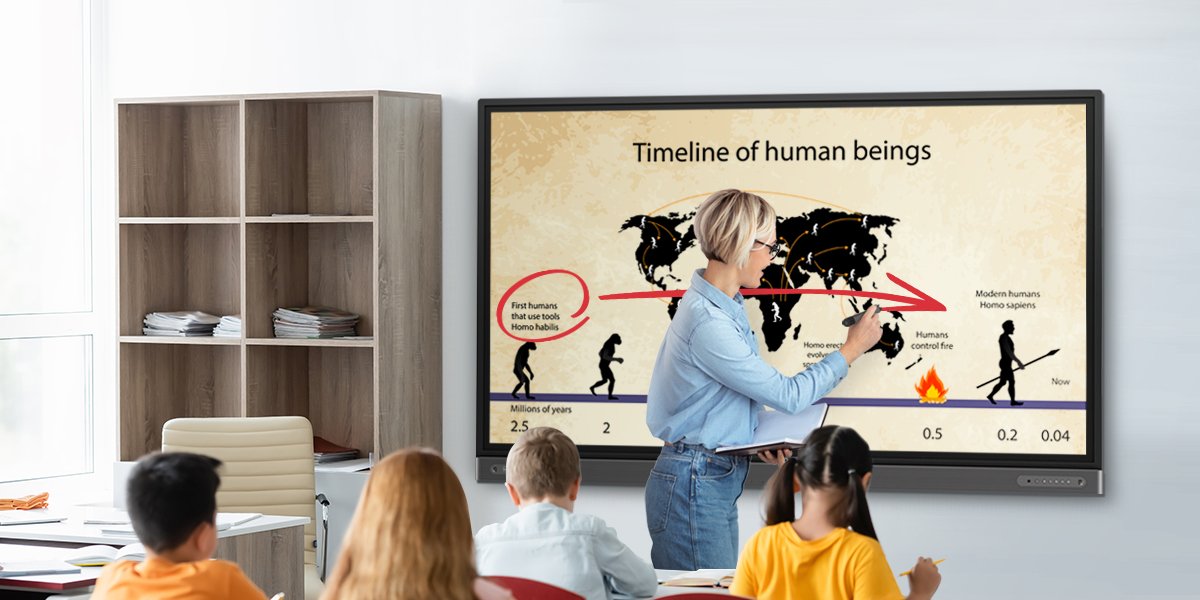
8 Examples of History Class Activities for BenQ Interactive Display
Historical Visuals, Enhanced
To engage modern students, working with a paper book full of text might not do the trick. Most 21st century students respond much better to visual learning than text and dry lectures. This is one of the reasons showing images and videos about what you are teaching is never a bad idea.
As you cover various topics, you can display relevant images to your students, such as portraits of historical figures, photos of artifacts, drawings of cities in the past, battlefield layouts, or historical maps.
For some of these, it’s enough to simply show the materials. Others, like maps or battlefield plans, can benefit from further interaction. You may want to show your students directions of movement, point out specific locations, or highlight certain areas. The best way to do so is to download the relevant images to your cloud storage like Google Drive or your BenQ interactive board’s storage, and then upload them to EZWrite. This will allow you to annotate on the image, draw in different colors, and add sticky notes.
If you need to show an image in real time, e.g. when a topic unexpectedly comes up in class and you don’t have an image ready, you can simply go to the Firefox browser on your BenQ smart board and google the image you need to show your students. If you wish to annotate right there and then, worry not! Simply touch the board with two fingers and hold for a couple seconds, and a floating tool will appear. Simply grab your BenQ pen, select a color, and start drawing!
If you wish to show your students videos covering the topics your class is about, Firefox allows you to browse from millions of videos on the Internet. Aside from the obvious choice of YouTube, there are a couple of websites with curated educational videos we would like to recommend you check out. See the Smithsonian’s History Explorer for videos and teaching resources, or History Extra from BBC.
Primary Sources Can Be Fun!
Generations of history teachers have depended on primary sources for teaching. Now you can easily do more with them. If you have PDF files for your primary sources, we recommend you upload them to EZWrite. As you analyze the text, you can interact with it as well!
Pick a student to come to the board and analyze the text as they read it aloud. Use the random picker tool in EZWrite to ensure that the student is chosen randomly. You can use the tool to pick more than one student. That’s a good idea if you’re planning to divide the text into smaller chunks and have more students involved.
Your students will come up to the board, grab the BenQ pen, and start underlining keywords as they read aloud. This will ensure that they truly understand what they are reading.
Alternatively, you can be the one reading if that’s what you prefer, or assign your students to do it themselves. You can enable EZWrite’s timer to give a sense of urgency. Turn on collaboration mode, ensure your students join the whiteboard from their device, and have them analyze the text on their own computer or tablet. As they go, they can highlight parts that they have questions about, then add notes on the margins or with sticky notes.
Reading primary source text can be a group activity! After completing the text, start a discussion and do your best to have your students work together on answering the questions they’ve noted rather than simply provide answers.
Put Knowledge to Practice!
Remember the paper handout you might have given your students or received yourself back in your school days? With different exercises like match pictures with text, fill in the blank in cloze quizzes, or put events on a timeline? Each of these can now be a group activity, right in front of the classroom.
You can upload a PDF or PowerPoint with the cloze quiz into EZWrite. If you have text with blanks, you can ask your students to come to the board and fill in the words.
Alternatively, you can input the full text without blanks and cover up the words you wish to quiz them about by adding colored rectangles and placing them on top of words. Divide your class into groups, most conveniently by seat location, e.g. three teams for three rows. Students can raise their hands to guess words. When a student guesses correctly, you can move the rectangle away, or delete it, revealing the word. Enable the point counter with the corresponding number of teams and add a point each time a student gets the right answer.
Competing for points is a sure way to get your students excited about tasks and do their best as their competitive spirit is awakened.
Another sure way to keep your students engaged and entertained while teaching or reviewing your class material is through Kahoot! quizzes. The software allows you to design your own quiz, or select one of countless ready-made ones from the library. Your students join the game from their own device, with the questions and possible answers displayed on the board. Kahoot! app (tailored to your BenQ display) is available on BenQ App Store*.
* On certain devices, BenQ App Store can be found under name "BenQ Suggests"
Timelines Visualized
One of the reasons many students fail to internalize historical events is the causal process that led to occurrences. For them to understand causality they need to first remember the order in which events happened.
Timeline to the rescue! BenQ interactive displays help you do the traditional timeline exercise in a fun way. Upload a suitable timeline background to EZWrite, as well as images of the events you wish your students to learn about. Write the dates on the timeline next to corresponding points on links. Add images of the events and scramble them on the whiteboard in EZWrite.
Have your students come to the board to drag images to the corresponding points. If they do it correctly, add a point either to an individual ranking you create or team ranking as described above.
Host a Debate
A good way to ensure your students understand events is to have them discuss historical dates in detail. And no better way to encourage analysis, research, and discussion than by pitting your students against each other in a debate.
To facilitate debates, go to EZWrite and enable “team post” mode. Write the topic of the debate on top and copy it over to the other side. After, write a description on each side for every faction in a historical conflict that teams will be arguing for.
Present your students with certain topics like “Would Alexander the Great win in a war against Genghis Khan” or “Should the USA have joined WWII?”. Divide the class into two groups and give them some time to research and discuss the topic (enable the timer tool).
Write key arguments for each side when they’re mentioned. At the end of the debate, decide which side had more solid arguments and therefore wins.
Visit Historical Sites and Museums Right from Your Classroom
These days we can travel without getting up from our seat. Of course not literally, but virtually.
Virtual trips and tours to historical sites are a great way to give your students a better picture of what you’re teaching them about.
Google Earth and Google Maps enable you to “visit” any place in the modern world. Almost every location is available for you to see, including historical sites like the Acropolis in Athens or Machu Picchu in Peru. With the Street View function you can take a virtual walking tour around many sites, viewing them from all angles.
Google also shares another resource called Google Arts & Cultures, which allows you to take virtual museum trips all around the world for free!
To take virtual trips, simply go to your Firefox browser, type the address in the top navigation bar, and go to the websites you’d like to visit just like you would from your PC or tablet.
Put Your Students Right in the Heart of Events
One of the most exciting things students find about history are all things military, especially battles.
If you’re teaching about some of the most iconic clashes or wish to compare military forces, their equipment, strategies, and effectiveness, you can run a simulation of a battle right in front of the classroom. To do so, connect and casr your computer screen to the board either by an HDMI cable (with touch control), or via InstaShare wireless casting.
Several games are available on Steam for you to download and run, e.g. Totally Accurate Battle Simulator or Ultimate Epic Battle Simulator.
By running this software on your PC and casting it to your board, you can show all your students how certain fantasy battles would end up or how the results of historical battles would change if you tweaked certain factors.
This is fun for hours, because your students have much more control over what is happening than when watching a passive video simulation.
Bringing in Outside Help
When you don’t have time to prepare your class materials or resources, you can resort to the infinite vaults of the internet.
Plenty of websites with activities and resources are out there to help you right when you need them. Some of them include games, 3D simulations and models, maps, images, and videos, as well as primary sources and articles.
Some of the websites that you can check out are Smithsonian’s History Explorer, History Extra, School History UK, and PBS Learning Media. For interactive historical games tailored to US curricula, check out iCivics.
You can also use mobile device apps. To do so, download and install them on your personal device (like smartphone or tablet), cast the screen to the board via InstaShare, and see them on the big screen.
An amazing mobile device app that we would like to recommend is a Civilizations AR app. With it, you can show your students historical artifacts as if they were right there in your classroom. Imagine “placing” a Pharaoh’s sarcophagus on your desk and x-ray scanning it to show your students the mummy inside. Neat, right?
Other apps you can cast from your device to the board are TimeTours, available for iPad, and History Adventures, an enhanced reading experience piece available on Apple Books.
Learn About History, Prepare for the Future
Teaching history doesn’t have to be done the archaic way, you can use a more modern and fun approach. If done right, your history class can encourage your students to learn more in their free time.
And since the world is moving in a paperless, digitized direction, your students will need to become familiar with modern tools, technologies, and attitudes. Why not start right there, in your classroom?
To see how else BenQ can help you deliver amazing classes, check our other articles below and learn more about BenQ interactive displays.
Teacher Tips 'N Tricks
-
Trends & Knowledge
[Teacher Tips 'N Tricks] Kahoot! on BenQ Boards- Guide to Fun, Engaging Classes
2021.08.16 -
Trends & Knowledge
[Teacher Tips 'N Tricks] 4 Apps You Need to Start Using Now on Your BenQ Board
Here is a list of 4 must-have apps for interactive displays in your classroom that will reshape the way you teach and students learn
2021.09.02 -
Trends & Knowledge
[Teacher Tips 'N Tricks] 5 Websites You Should Be Using Now in Classrooms With BenQ Boards
See 5 examples of websites that can help you teach easier and more efficient and make classes unforgettable, directly from your BenQ Interactive Display
2021.12.03 -
Trends & Knowledge
[Teacher Tips 'N Tricks] How to Prepare Your Students for Collaborative Future in Tech-Rich Classrooms?
Collaboration is a skill your students will need in the future. Now, thanks to BenQ boards, you have a chance to teach your students how to work in a project team!
2021.11.05

